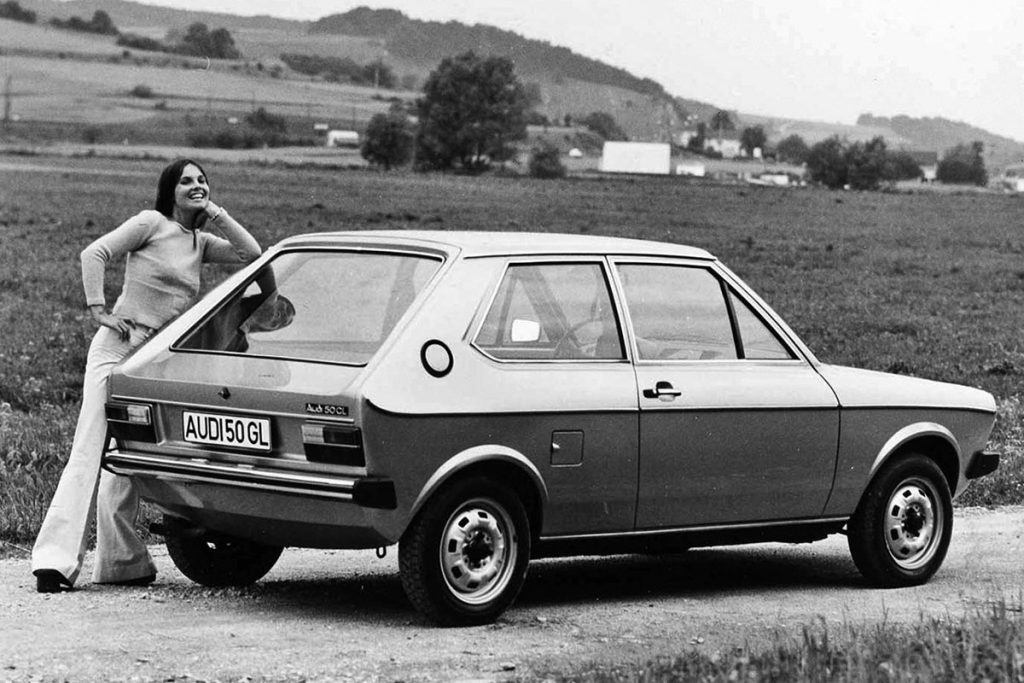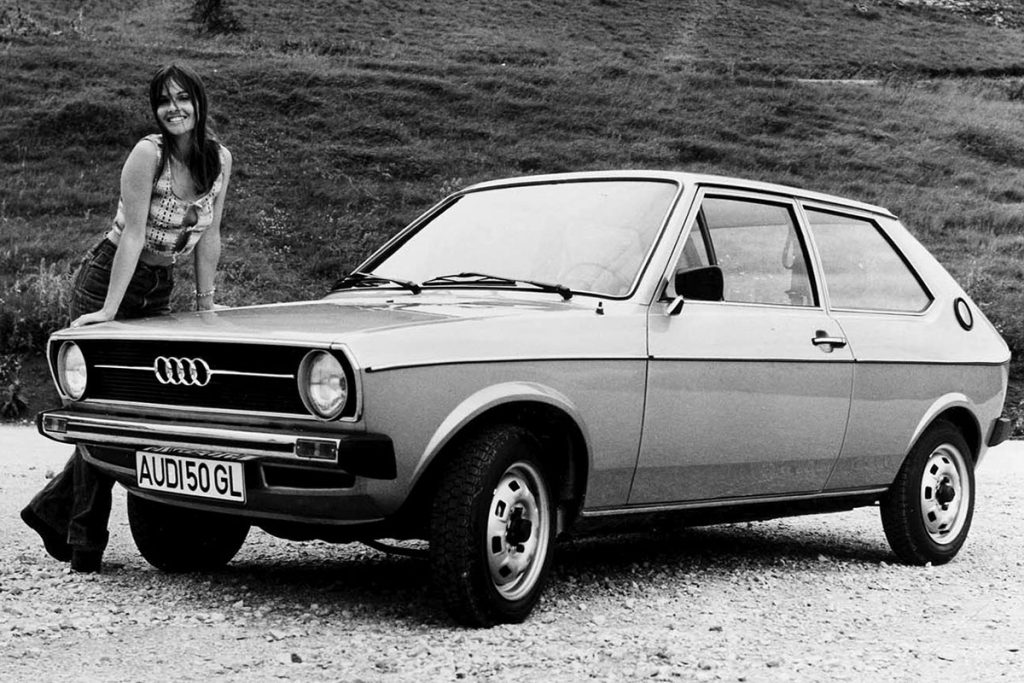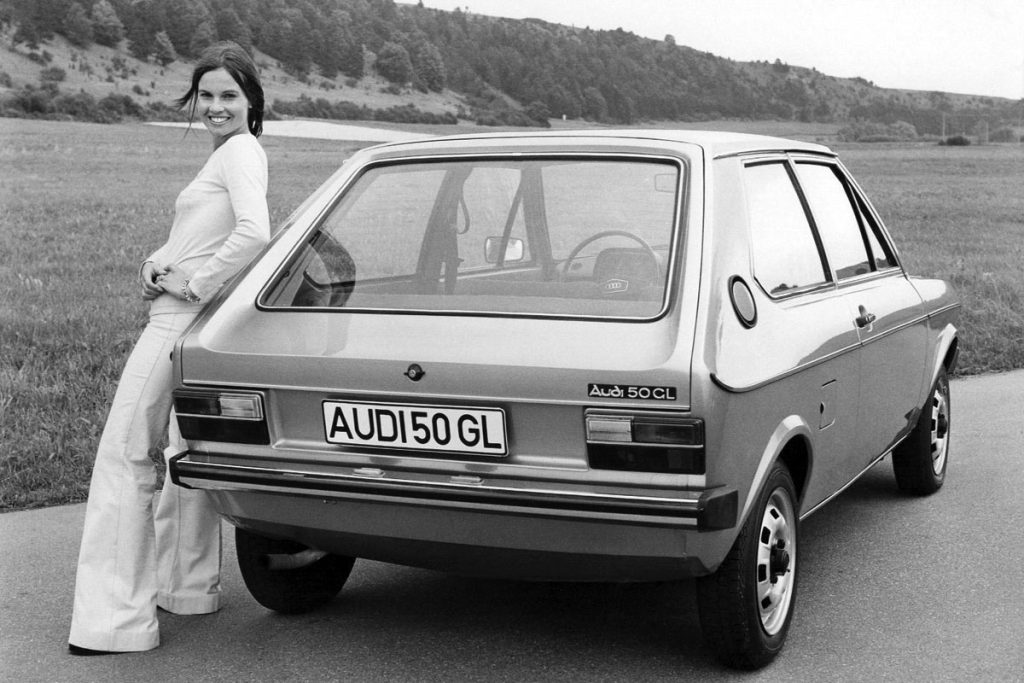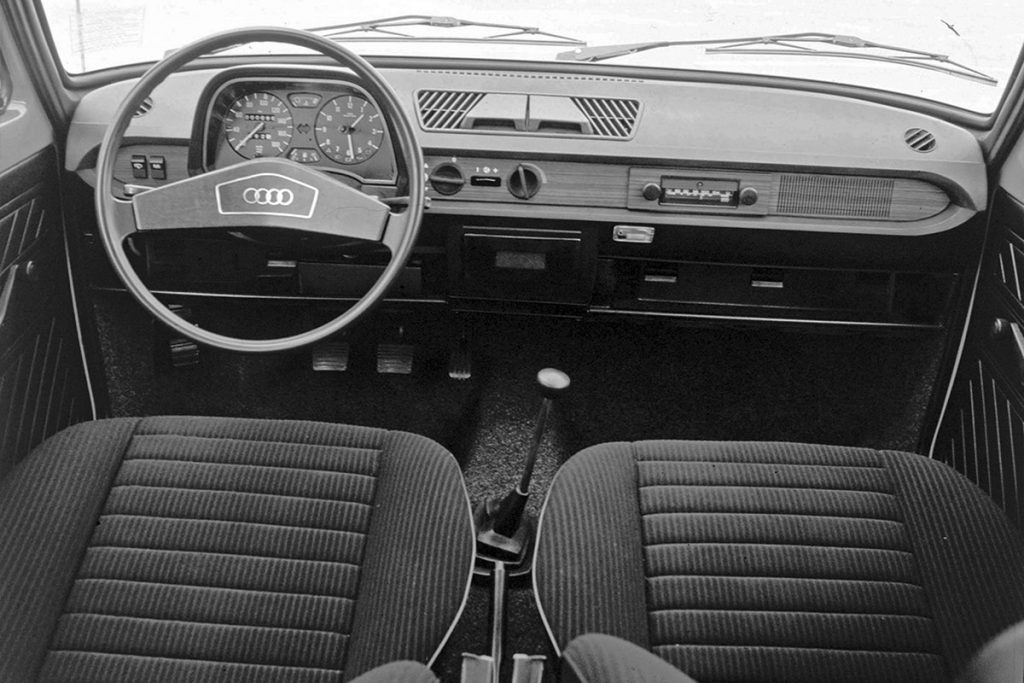When is a Volkswagen Polo not a Volkswagen Polo? When it turns into a layby of course. No, sorry – wrong punchline. That should have read when it’s an Audi 50. OK, so the real punchline isn’t very funny (nor the one about the layby…), but then Volkswagen-Audi does have something of a sober reputation. It certainly did in 1974, when the Audi 50 was launched.
The Audi brand had been carefully nurtured throughout the second half of the sixties, with models such as the Super 90 of 1966, and the 60, 75 and 100 saloons that came in 1968. These all featured relatively large engines and bodyshells, so as a result they were costly. Ludwig Kraus, Audi board member and head of technical development, could see that there was a big demand for cars that were smaller, lighter, cheaper and more frugal, and this demand was only going to increase. His solution in 1971 was to start developing a compact front-wheel drive hatchback, with a small-displacement four-cylinder engine that put the focus on economy rather than performance.

When it was unveiled in autumn 1974, the Audi 50 represented something of a revolution for its maker, if not for the automotive landscape more generally. The Golf and Scirocco had just been launched, marking an even more momentous turning point for Volkswagen, as the company moved to front-engined, water-cooled, front-wheel drive cars; we’ll gloss over the ill-fated NSU-developed K70 here, and cover it in the future. The 50 looked a bit like a shrunken Golf, but whereas that car had been designed by Giorgetto Giugiaro, Audi styled its new supermini in-house.



Available only in three-door hatchback form, the Audi 50 was a full 10cm shorter than a Fiat 127, and it was even 8cm shorter than the diminutive Peugeot 104, but the fold-down rear seat improved versatility. While this wasn’t an especially luxurious car, it did feature full carpeting, a clock and a wood strip across the dashboard, which cars in this class didn’t normally have. Most importantly though, the 50 was built to Audi’s usual high standard, not that UK buyers got to sample it because it was never imported here. When the 50 was unveiled in Germany, VAG’s UK importer knew that there was a Volkswagen version on the way, and the focus should be solely on that, with Audi dealers kept busy selling the bigger, more profitable models such as the 100.
Tipping the scales at just 685kg (a current Mini Cooper hatch and an Audi A1 Sportback each weigh half a ton more), Audi focused heavily on reducing weight without any sacrificing safety. The four-speed gearbox casing was made of magnesium alloy to save precious kilos, while the plastic and aluminium radiator weighed half as much as normal. Steering was by rack and pinion, there were split-circuit disc brakes up front and drums at the rear, while the front suspension was courtesy of MacPherson struts, with trailing arms and a transverse link at the back.
The 50 came with a 1093cc four-cylinder engine with either 50bhp (LS) or 60bhp (GL), which gave top speeds of 88mph and 95mph respectively; very respectable for such a small runabout. Even more impressive was the 50’s crash credentials; great attention had been paid to the bodyshell’s structural integrity, and in a 30mph frontal impact test the steering wheel was deflected by just a couple of inches, which was less than half what was allowed.

Even though the 50 was never going to be sold in the UK, it was driven by British magazines and attracted rave reviews about its superb ride quality, precise handling, spritely performance and excellent build quality. Despite the Audi’s compact proportions, the cabin was also decently roomy.
The Audi 50’s biggest problem was that it always lived in the shadow of the Polo, with the latter enjoying a longer life and it was also made in much bigger numbers. But the 50 was still a case of the right car at the right time for Audi, because it arrived just as the Fuel Crisis was in full flow, and cars that focused on economy were the easiest ones to sell at the time. In the event the 50 enjoyed a reasonably long production run, with more than 180,000 examples built by the time the final car rolled off the Ingolstadt production line in July 1978; the Polo would soldier on for another three years, by which point the production tally was more than four times as many as the Audi.
Unfortunately for Ludwig Kraus, this was the last car that he oversaw for Audi, because he was seriously injured in a car crash just before the 50 was launched, and as a result he was forced into early retirement. Had he continued in his previous role, you can’t help but wonder what Audi might have done differently in the second half of the seventies. Not that it should have any cause for regrets, looking at its sales trajectory.
Check out the Hagerty Media homepage for daily news, features, interviews and buying guides, or better still, bookmark it.








